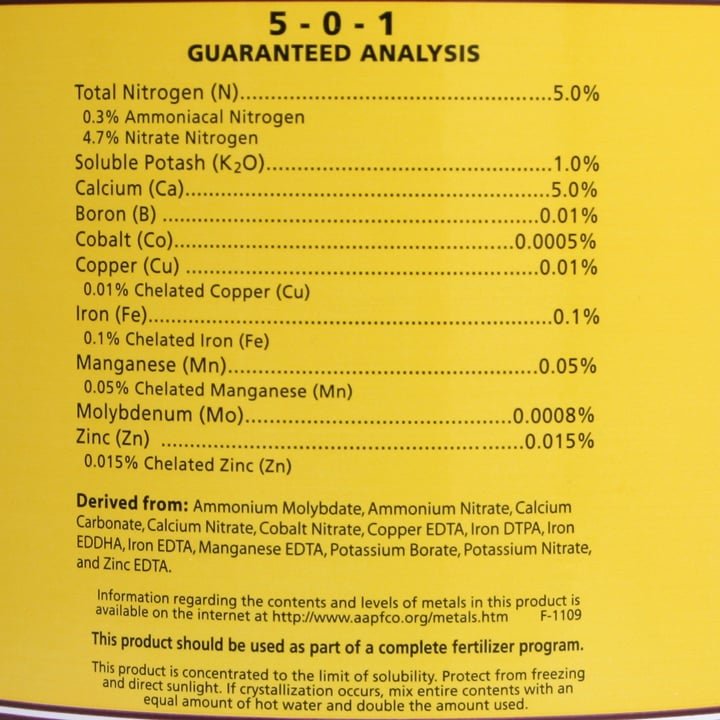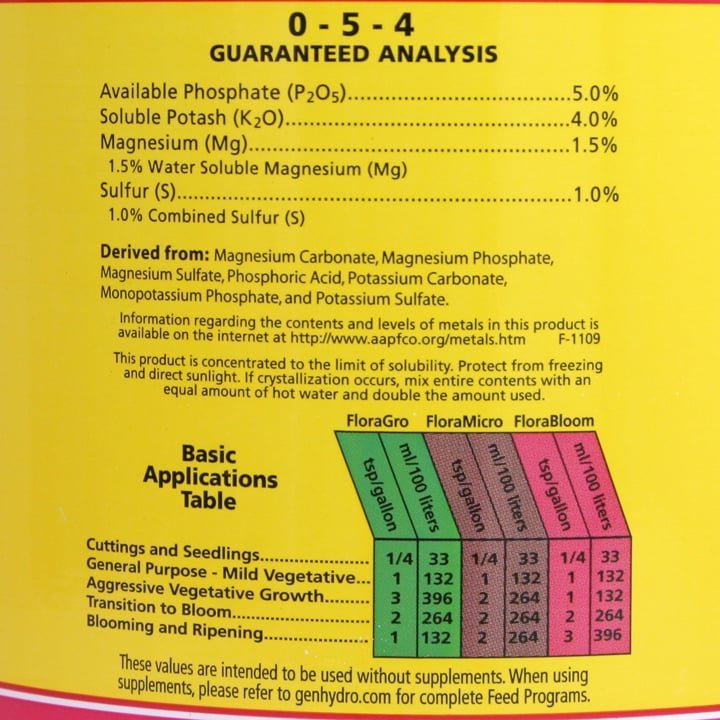OK, so I've undertaken a deep search (not sure if I can dub it a 'research') and I found some things regarding the disclosure of ferts in Indonesia:
I've looked on the ferts' derivatives of General Hydroponics' Flora Series and I can pinpoint some of the basic ingredients of said ferts are available in Indonesia. For example:

- GH-FloraMicroLabel2-pop.jpg (88.69 KiB) Viewed 71782 times

- GH-FloraBloomLabel2-pop.jpg (98.84 KiB) Viewed 71782 times
Some of the ingredients listed here are available and affordable in Indonesia, with few exceptions: ammonium molybdate, which 1 kg of it is sold as much as USD $500 (IDR Rp8.000.000), which is ridiculously expensive, I'm not sure why. A cheaper alternative exists, that is sodium molybdate, which due of it having sodium in its name, I decided to move on.
I was thinking I could replicate these ferts' ingredients, but knowing my current expertise in chemistry, not in the long run, I guess.
Based on that, and also the list of the prices of Flora Series ferts in some online shops (I mostly compare from Ubuy and Amazon), I see ferts that contain no chloride (and sodium, hopefully) are relatively expensive. This applies too to Meroke's PROVIT series, in which I was tempted to just buy Mutiara series which can be twice cheaper than PROVIT (for example, per 1 kg, GROWER costs IDR Rp25.000 in average while PROVIT Hijau costs IDR Rp50.000 in average - USD $1.5 compared to USD $3). Then, based on how that GROWER includes potassium chloride as its major source of potassium, I looked on raw potassium sources available here.
For another comparison, two ferts that are stated as 'potassium nitrate': Meroke CPN and Meroke KALINITRA. Both have the same content but with different ingredients based on their content specification: CPN have about 15% N, 15% K2O, and...
17% Na and 1% Cl. Table salts! With KALINITRA stated 13% N and 46% K2O - the same as potassium nitrate's Wikipedia entry, KALINITRA is much more tempting. But the price? CPN is three times cheaper than KALINITRA. I assume CPN isn't even a pure potassium nitrate to begin with.
I found that potassium chloride is indeed more common and cheaper compared to another (again, hopefully) trustworthy potassium source, the potassium nitrate. I believe PROVIT series, as far as I/we know it, is still safe based on the prices they apply to each Mutiara and PROVIT ferts.
Whoops, I'm not done yet.
Remember that earlier in this thread, I also suggest using GrowMore ferts? Turns out there's a twist.
I've covered both the American and Indonesian version of GrowMore ferts and found that somehow, Indonesian version still goes with the 'no disclosure of ferts' derivatives' trend while the American version stated it nonetheless. For example:

- 61VyIvcvlDL.jpg (80.18 KiB) Viewed 71782 times

- 1b5aecd78a1474d670c86933b26773f9.jpg (49.22 KiB) Viewed 71782 times
Both are the same fert, 20-20-20. In the Indonesian version, no 'Derived From' section, while the second one has it. Again, according to Steve:
Steve Johnson wrote: ↑Wed Oct 25, 2023 6:24 pm
Wiandry Adi wrote: ↑Wed Oct 25, 2023 5:00 amI may use that info as a reference when I ask the folks who knows better.
Unfortunately, they won't tell you why US regulations are strict, but I will -- from Wikipedia:
- "The Pure Food and Drug Act of 1906, also known as Dr. Wiley's Law, was the first of a series of significant consumer protection laws which was enacted by Congress in the 20th century and led to the creation of the Food and Drug Administration. Its main purpose was to ban foreign and interstate traffic in adulterated or mislabeled food and drug products, and it directed the U.S. Bureau of Chemistry to inspect products and refer offenders to prosecutors. It required that active ingredients be placed on the label of a drug's packaging and that drugs could not fall below purity levels established by the United States Pharmacopeia or the National Formulary."
Going from FDA regulations to requirements for providing a guaranteed analysis which includes "derived from" statements with fertilizers isn't much of a stretch. The only difference here is that guaranteed analysis regulations are set by the various states, not the Federal government.
I think GrowMore adjusts to Indonesian trend (which may be a custom, I'm concerned) so they don't have to disclosure their ingredients here, while in the US, they're obliged to. Thankfully, I can access their website and some other sources that also list GrowMore's ferts' derivatives and I found no sodium nor chloride is mentioned. But of course, GrowMore ferts are relatively expensive here, ranging in IDR Rp75.000 for 454 gr (1 lbs; I'd say it's 500 gr).
With this posted, GrowMore is the only fertilizer lines in Indonesia that has disclosed their ferts' derivatives, at least if one understands English fluently and be able to access their website

Maybe the key is if it's cheap, then it probably contains table salts, or just chloride. Gotta be careful with financially tempting stuffs...
So yeah, I'll still find a way to contact Meroke in this regard, just to be safe.
Oh, by the way, Steve, I see both General Hydroponics and GrowMore are both based in California, so if I'm not mistaken, maybe you have more experience on GrowMore products since for you, GrowMore is a local product (since Los Angeles is in California...)










